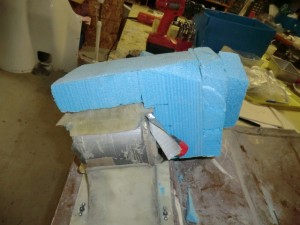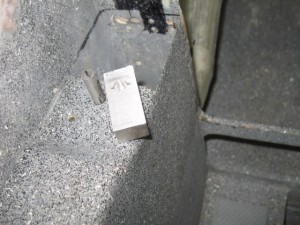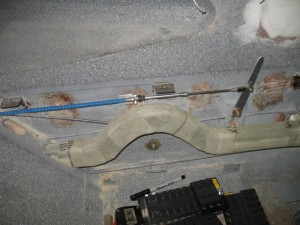Ram Heat Part 2 (Heating design)
Over the years I have tired EVERY way imaginable to heat the plane. I could tell you many stories of flying in cold weather. It is really a horrible environment to fly in. Gloves, hat, jacket, sweat pants or a snowmobile suite. It is so cold at altitude. ITS CRAZY that ytou can buy a cheap car with better heat than our planes.
Over the years:
I tried improving the plans exhaust heat system with additional contact area on the exhaust pipes and a fan. Worthless
I tied an electric heater. Drew 40 amps. Worthless
I tired a high pressure, recirculation air system. Fair
Engine oil pressure->external vernatherm->heater->engine return It uses a fan to blow air through the core.
This system worked ok. I had to duct the hot air to the pilot. I could keep the plane comfortable to about 20 def F OAT. At 15 deg F, OAT the plane was drown right cold due to the air leaks. Also I did NOT like the thought of high pressure oil in the cabin and the potential of a uncontrolled oil leak.
When I rebuilt my LongEZ, The driving factor for cutting off the nose was that, well I HATED IT, and the decision to incorporate a ram air opening and couple it with a heater using an oil pump to move the oil. I call it Low Pressure RAM Air heat. Using a ram air opening, i raise the cabin pressure to eliminate air leaks and additionally provides method of heating the incoming air without a fan. Simple and safe.
The air inlet on the nose of my EZ supplies both the heater and cold air supply vents for the dash. You can see some of the nose build process in my blog.
The LP RAM Heat concepts works exceptionally well. I can fly in any weather with no air leaks and in the coldest weather with jeans and light shirt. No air leaks, no fogging of the canopy. The coldest I have flown in is 0 deg F and I was still getting 110 deg F out of the heater. What I love is flying on a chilly day, like 45 def F. Turn on the system and supply just enough heat to be comfortable since the heat out put is adjustable. I love flying in cold weather now.
Note: Generally I measured a delta T across the cooler around 100+ def F. The temp of the oil supply from the engine at the heater is typically at 145 deg F.
I’ll be detailing the installation of RAM heat in my Cozy next.



























